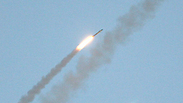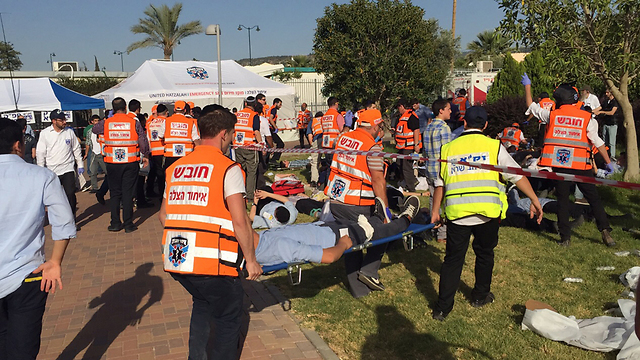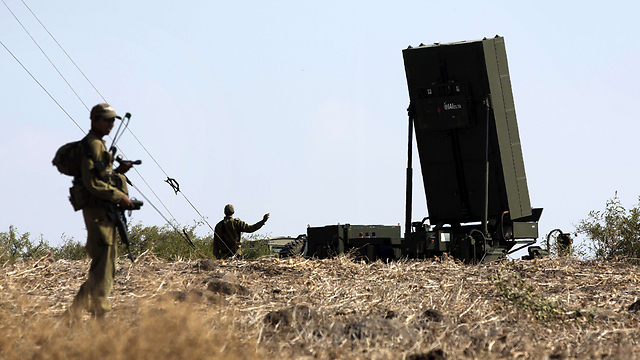
IDF prepares for all-out war in next week’s drill
The Home Front Command puts together several alternatives to a variety of emergency scenarios, in preparation for what will come during Israel's next war, whenever it might take place
In preparation for the Home Front Command’s nationwide drill due to take place next week, new data about simulated scenarios have been published. These include an all-out attack on several fronts simultaneously, namely Gaza, Lebanon, the Syrian Golan Heights and Iran. The drill will prepare for a slew of missiles and rockets, 95% of which are assumed to be short-range (up to 45 km) and equipped with 10 kg of explosives. The scenario will also include a situation where Israel suffers up to 350 – 400 casualties.
1% of the rockets and missiles included in the situation are assumed to hit populated areas. Out of the 230,000 multi-range armaments, most are expected to be grad rockets or mortars, targeting a wide area from Haifa in the north to the Shfela region in the south. The Home Front Command will prepare for dozens of rocket landings throughout this area.
The overall assumption is that, similar to what happened in Operation Protective Edge, the majority of the missiles and rockets targeting Israel in the next war will fall in open areas. As a result, the IDF is focusing its resources on countering a massive infiltration from Hzbollah’s Raduan units into Israeli territory. Such an infiltration would not necessarily be in order to conquer Israeli land, but for Hezbollah to appear victorious - to bolster motivation among its fighters by temporarily capturing an Israeli settlement.
It should be noted that Hezbollah is known to be in possession of hundreds of unmanned aerial vehicles (UAVs), most of which are Egyptian or Iranian-made. The Israeli Air Force will be responsible for countering Hezbollah’s aerial weaponry, with the Home Front Command putting together a response to such a threat.
The Home Front Command has invested hundreds of millions of shekels in improving its alert system, a system which is due to undergo a massive overhaul in preparation for the next war. The Home Front Command will demarcate 3,000 alert areas, something which will greatly aid the Command by focusing its alerts at specific locations.
As such, alert times will shorten from a minute to 30 seconds, and since it will focus on a smaller area, one third of the number of civilians who are alerted to run towards a secure space during Protective Edge will need to do so during the next war. In addition, the radius of alerts in open areas that might have civilians in them will be one square kilometer.
The Home Front Command have accomplished two other goals as well - the first being verifying that civilian nuclear, biological and chemical (NBC) kits in the Golan Heights are up-to-date in preparation for Syrian-based terrorist groups who may use unconventional chemical warfare agents, such as chlorine. This despite a general assumption that the threat of the Syrian Army using chemical warfare against Israel has dramatically decreased, due to the civil war that has only recently been halted by a US and Russian-brokered ceasefire .
A second, recently-accomplished goal of the Home Front Command has been the erection of an emergency war room that will receive live video feeds from cameras dispersed throughout the country.
The sirens that will be sounded during the drill are meant to help the civilian population practice getting to a designated safe space in different situations and scenarios. These include such possibilities as exposure to hazardous materials from the Haifa refineries, civilian evacuations and rescue efforts of civilians from underneath a wreckage.

Recent Home Front Command polls have found that 71% of the general population feel they know how to react in case of a nearby missile strike. Particularly of note is the discovery that 75% of the ultra-Orthodox sector feel confident they would be able to successfully choose a safe space in such a scenario doubled, up from 34%.
Two main courses of action have been formulated by the Home Front Command regarding civilian evacuations, the first being a more specific evacuation and the second a widespread evacuation decreed by the Security Cabinet.
In the worst case scenario, 750,000 people need to be evacuated and will need to be relocated to other communities. According to the plan, each regional council will be obligated to take in 4% of its current population.
The drill will take place from Sunday to Wednesday. On Tuesday, a siren will be sounded around 11:00 and 19:05 throughout the country, except in settlements close to the Gaza Strip.











